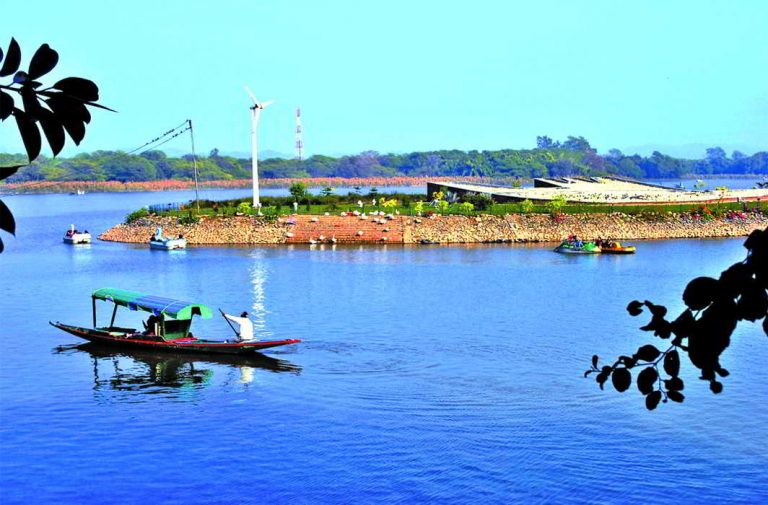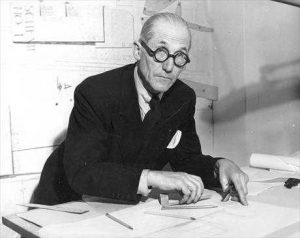
A move to pump ground water into this famous Lake has been challenged in the Punjab and Haryana High Court. Will this help alleviate the heavy siltation that has taken place here over the years?
~By Vipin Pubby in Chandigarh
World-famous French architect and planner Le Corbusier may have never visualised that the man-made lake—Sukhna—that he created in the new city of Chandigarh “for the care of the body and spirit” of its residents would one day need pumping of ground water to boost its level.
The unusual remedial step, which has now been challenged by a resident through a PIL in the Punjab and Haryana High Court, has been taken in the light of heavy siltation of the Lake. The silt from the catchment area in Shivalik ranges brought down the average depth from 8 feet to 3.5 feet and laid bare large tracts of its bed. Its surface area reduced from 3 sq km to 2.2 sq km.
This prompted Chandigarh Administration to fill it up by marshalling seven tube wells to pump water into the Lake. It aims to pump in two million gallons of water per day to enable an increase of three feet of the current water level in the Lake. Ironically, digging of tube wells by individuals for personal use is banned in the city.
The immediate provocation for the step was the High Court’s own directive to the Administration to save the Lake. The Court had taken up the issue suo motu in 2009, following reports of the water level decreasing alarmingly.

The Lake was planned in the late 1950s, alongside Chandigarh, with the twin objectives of creating a recreation centre as well as to tame the Sukhna choe (seasonal rivulet) flowing down from the Shivalik ranges and causing floods during the monsoon. An area of about 3 sq km was selected and a semi- circular 3-km long and 12.8-m high rock-filled earthen structure was constructed to block water.
The Lake, which is popular with the locals and one of the major tourist attractions, had also become a favourite sojourn point for thousands of migratory birds. It was also declared a national protected wetland. It used to be a venue for water sports and now has a large number of boats, besides shikaras.
The problem of silting started shortly after the commissioning of the Lake. Its storage capacity was 10.47 million cubic metres. In the first few years, the Lake lost 20 percent of its capacity to siltation. According to official estimates, this capacity decreased to a mere 56 percent of the original. The problem became acute in the mid-80s, prompting the late comedian Jaspal Bhatti to stage a cricket match on the dry areas of the Lake. Subsequently, a mass shramdaan (volunteer movement) was organised in 1987 and thousands of city residents, including school children, participated in manually desilting the Lake. However, the effort bore little fruit.
It was then that on expert advice hundreds of check dams were constructed in the 2,540 hectares of forest catchment area of the Lake to prevent silt from entering it. The step helped in curbing the flow of silt but evidently, these check dams have filled up and are blocking the flow of water into the Lake.
Though the Court had asked the Administration to set up a committee and seek expert advice, all it has come up with is this proposal to fill the Lake with the help of tube wells. These tube wells are located in the golf course along the Lake which is also flanked by manicured gardens of the residences of Punjab and Haryana governors.
The Administration had earlier proposed to let treated sewage water flow into the river but the move came under sharp criticism from environmentalists. Even the move to fill the Lake with tube well water has been criticised by experts who think it is unwise to use ground water for the purpose. They point out that the water table is already going down and residents would face shortage in summers.
They also suggest that the check dams had served their purpose and should be dismantled to make way for water to the Lake. Recently, a suggestion was made to divert the waters of another rainfed river, Ghaghar, by a constructing a small channel.
As per the current plans of the Administration, it would keep pumping water from tube wells till March when the demand for water increases in the city. Some areas, particularly those in the south, face acute water shortage in summers even though the city is much better placed than others in the country as far as per capital availability of water is concerned. Drinking water supply is generally rationed during peak summers and due to low pressure, water often does not reach second or third floors.
The Administration, as per an official release, subsequently proposes to divert a part of its share from the Bhakra canal, which brings water from the Satluj river, to the Lake. The water from the canal is diverted through pipelines from Kajauli, about 30 km from Chandigarh, as its share from Punjab. An additional pipeline is being currently laid to augment the supply of water from the canal.
A division bench of the High Court, while taking cognisance of the PIL, has referred it to the bench which had been hearing the suo motu case pertaining to siltation of the Lake.
Such was the emotional connect of the City Beautiful’s planners and builders that Pierre Jeanneret, a cousin of Le Corbusier, who was also involved in designing several buildings in the city, had willed that his ashes be immersed in Sukhna Lake. He passed away in 1970 and as per his will, his niece brought his ashes to the Lake.
Residents are now keenly watching the proceedings of the PIL.

